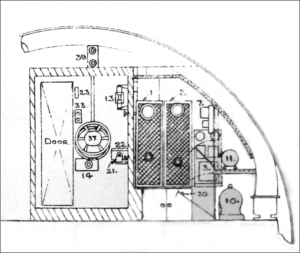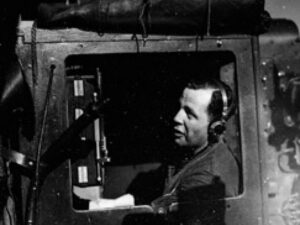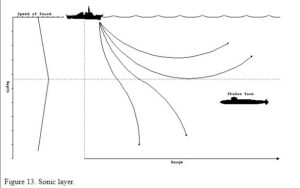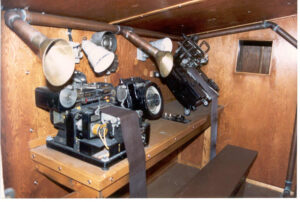ASDIC is said by some to stand for Anti-Submarine Detection Investigation Committee
A Cover Up!
It was a cover name for highly secret work by the Anti-Submarine Division of the British Admiralty during the First World War that aimed to improve the techniques for detecting dived submarines. The best that was available at the time consisted of hydrophones to listen for the U-boat propeller, but these were ineffective unless the vessel operating them halted before lowering them into the water and remained stationary thereafter.

Analysis after the war showed that the total number of U-boat losses credited to detection by hydrophones was just three; meanwhile German U-Boats had sunk so many allied ships that there was a very real possibility that imports of food and other vital supplies to Britain could have been reduced to a trickle. Fortunately, since Admiralty staff did not manage to find a technical solution to the detection problem before the First World War ended, the number of sinking by U-Boats was rapidly reduced by the introduction of the convoy system on 26th April 1917. They did, however, recognise that the answer lay in finding a way to emit a pulse of sound underwater which would be picked up when it rebounded off a submarines’ hull.
Between Wars
In the interwar years, research continued, and by 1938 the technology of bouncing sound waves off a submerged object that had been developed by the British into ASDIC anti-submarine detection equipment. A transmitter encased in a water-filled metal dome on the ship’s bottom sent out a series of ‘pings’. The operator sitting in the ASDIC compartment behind the bridge could turn the transmitter head to cover an arc of about 4 degree each side of the ship’s head. When the sound pulse struck an object it ‘echoed’ with a beeping sound and the operator altered the officer of the watch or ship’s captain, giving a range and bearing.

In Practice
Before the Second World War, the Royal Navy’s faith in ASDIC was such that the Naval Staff believed the U-boat threat had been largely overcome. There was much discussion in the Admiralty on whether it would be necessary to institute the convoy system in the event of war. Fortunately, merchant shipping was ordered into convoys immediately on the outbreak of the Second World War, because in operational conditions ASDIC did not perform as well as had been hoped for several reasons: Its range was only 1,370 meters; neither bearings nor rages could be read accurately – there could be an error of a few degrees in bearings, and a possible error of 23 metres in range. It was usually impossible to discriminate between submarine and non-submarine targets, such as whales.

Collaboration
Early in the Second World War, British ASDIC technology was passed to the US, where work on Sound Navigation and Ranging (SONAR) had been in progress for some years. British and American scientists worked together throughout the war to produce a more accurate and reliable ASDIC/ SONAR equipment for both navies. By the end of the war, SONAR as the British now called it, was able to locate submarines more accurately, and this, combined with significant advances in depth-charge technology, played, a major part in defeating the U-Boat.


